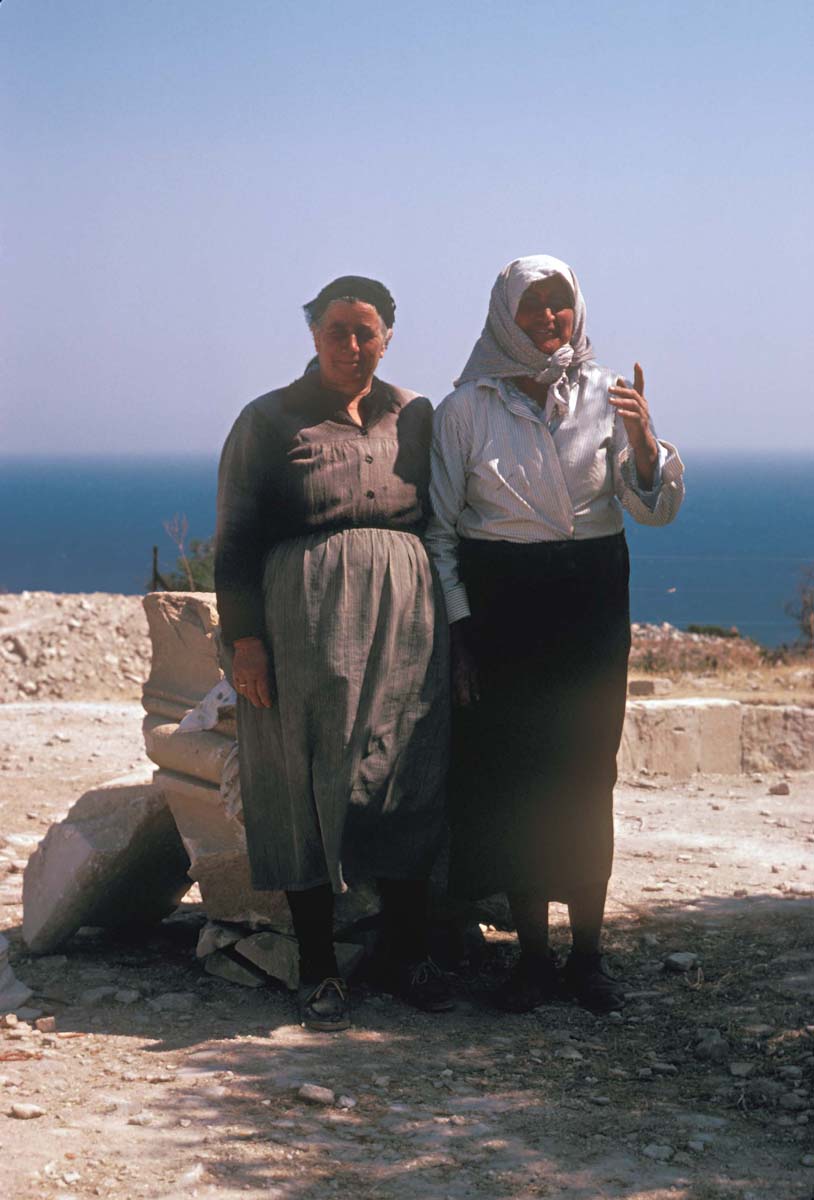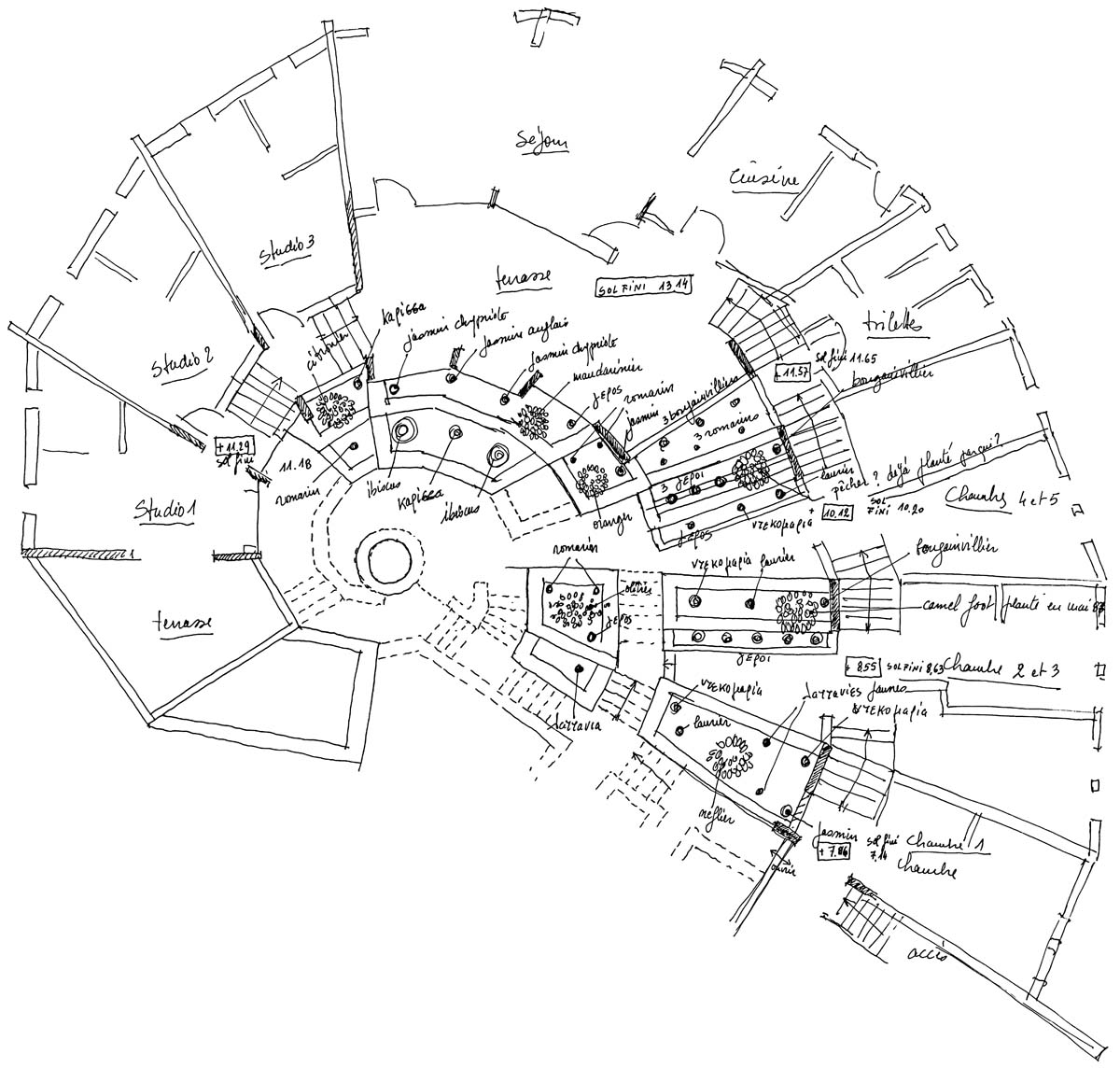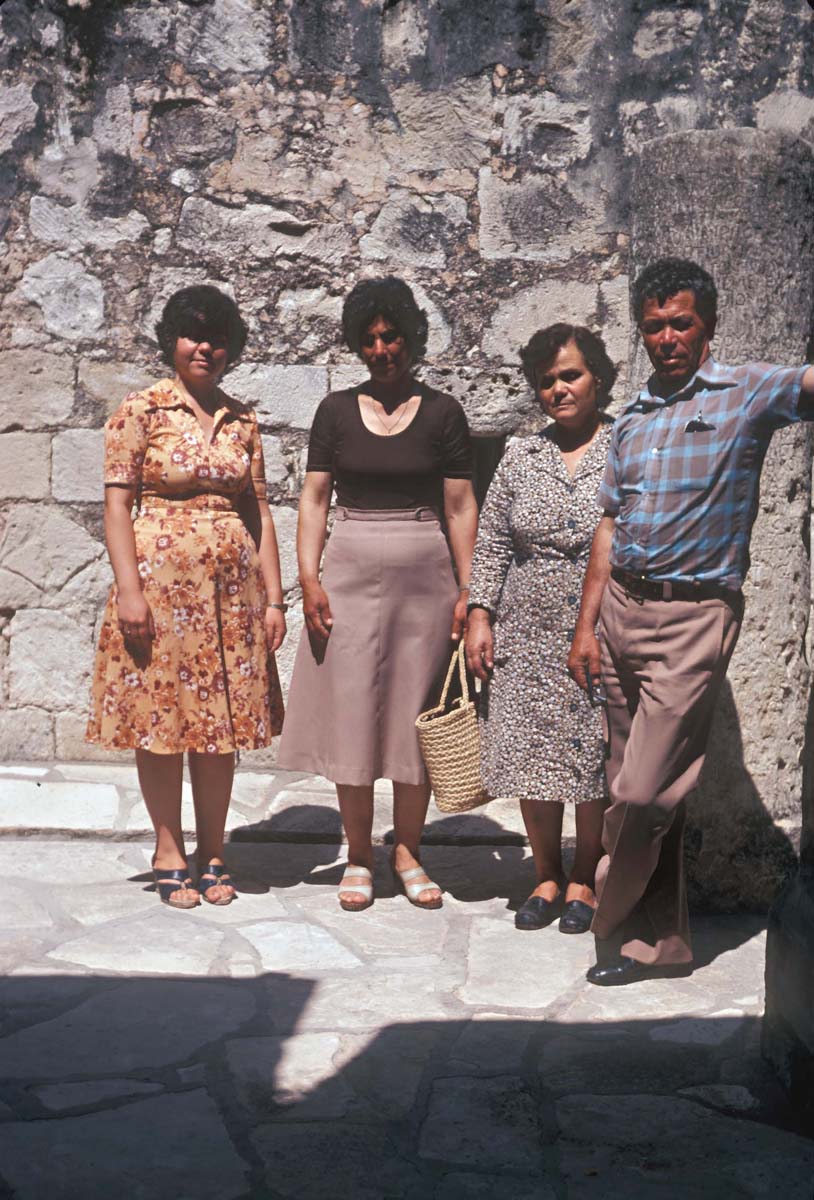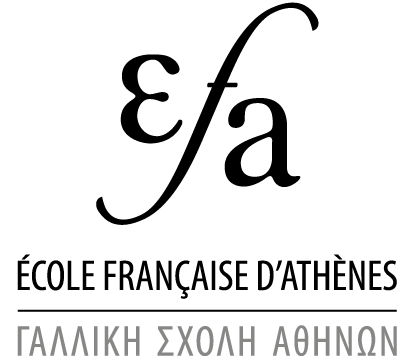From the first year, Pierre Aupert, director of the mission, assembled a substantial team of archaeologists with the aim of starting several test trenches on the acropolis. These excavators followed one another in the field working in tandem with an extensive number of workers (at least twenty): in the years following the Turkish invasion of the northern part of the island and the displacement of populations that came in its wake, excavations actually provided the refugees with at least temporary employment.

Workers at the sanctuary, 1979 (F. & A. Hermary / Archives EFA, Y.2573)
The members of the mission stayed in rental apartments at Limassol and transferred the excavation material to the medieval castle (“Kastro”) at Limassol where working conditions left much to be desired. Construction of a house, on a piece of land bought by the French School at Athens in the village of Agios Tychonas, equipped with storage rooms for stocking the material that had not been deposited in the Limassol Archaeological Museum, would as of 1982 drastically change the excavation and study conditions – even further improved a few years later by the addition of three studios and a new storage room.

The excavation house, sketch (M. Schmid / Archives EFA, 16893)
During the 1980s the excavation crews once again included a considerable number of Cypriot workers, both men and women, recruited and led by Kypros Tsangarides, technician for the Department of Antiquities, put at our disposal as foreman by Vassos Karageorghis then by the directors of Department who succeeded him: with his remarkable capacities and dedication he played a major role in our mission for a good twenty years. As of the 1990s it became more difficult to recruit Cypriot workers and the site managers called on students more widely. Among those who regularly collaborated in the expedition research in addition to their fieldwork, we must acknowledge Andrea Georgiades, conservator at the Cyprus Museum and Nikos Petrides and Odysseas Michaïl, technicians at the Limassol Archaeological Museum.

Kypros Tsangarides and his family, 1979 (F. & A. Hermary / Archives EFA, Y.2574)
A. Hermary, trans. A.M. Schroth-Daskalakis
